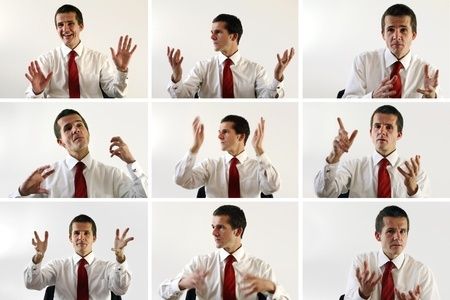The human mind is a complex web of thoughts, emotions, and behaviors, and the art of psychology is a discipline that seeks to unravel these intricacies. One of the fascinating aspects of psychology is the ability to understand and interpret human behavior, including the act of lying.
Lying is a universal human behavior, and as such, psychologists have developed a variety of techniques and tools to spot when someone is not telling the truth. This article explores the art of psychology in the context of detecting deception and provides insights into how to spot a person who is lying.
The Nature of Deception
Before delving into the techniques of spotting lies, it is essential to understand the nature of deception. People lie for various reasons – to protect themselves, to avoid consequences, to gain an advantage, or simply to maintain social harmony.
Understanding the motivations behind lying is crucial to recognizing deceit. In psychology, deception is often divided into two categories: deliberate deception and non-deliberate deception. Deliberate deception involves consciously fabricating false information, while non-deliberate deception may result from memory lapses or confusion.
Non-verbal Cues
Non-verbal cues play a significant role in identifying lies. When individuals lie, their bodies and faces often betray them, manifesting a variety of telltale signs. Some common non-verbal cues to look for include:
1. Microexpressions

- These are fleeting facial expressions that last for just a fraction of a second and reveal genuine emotions. When someone is lying, microexpressions might betray their true feelings despite their words.
2. Eye contact

- While many people believe that a liar will avoid eye contact, this is not always the case. Some liars may maintain strong eye contact, while others may indeed avert their gaze. It’s essential to consider baseline behavior and the context when interpreting eye contact.
3. Body language

- Shifts in body posture, fidgeting, or sweating can indicate discomfort or anxiety, which may be linked to lying.
4. Speech patterns

- Stuttering, hesitations, or contradictions in speech can be indicators of deception.
Verbal Cues
Verbal cues are another crucial aspect of identifying lies. These cues can include:
1. Inconsistencies
- Liars often provide inconsistent or contradictory information. Detecting these inconsistencies can help identify deception.
2. Qualifiers
- Excessive use of qualifying statements like “honestly,” “to be truthful,” or “frankly” might be a sign that someone is trying to emphasize their honesty, possibly indicating deceit.
3. Vague language
- Liars may use vague or ambiguous language to avoid providing precise details.
4. Defensiveness
- People who are lying may become defensive or evasive when questioned about their statements.
5. Lack of emotion
- Some liars may exhibit a lack of emotion when discussing events or issues that should evoke strong emotional responses.
The Polygraph and Other Techniques
Psychology has also developed various scientific techniques for detecting deception. The polygraph, or lie detector test, measures physiological responses such as heart rate, blood pressure, and perspiration to assess the truthfulness of a person’s statements.
While the polygraph is widely used, it is not foolproof, and false positives can occur. Other techniques, such as the Reid Technique and Statement Analysis, offer structured methods for interviewing and analyzing the credibility of statements.
Cultural and Individual Variations
It’s important to note that the art of psychology in spotting lies is not an exact science. Cultural norms, individual differences, and context all influence a person’s behavior, making it challenging to develop a one-size-fits-all approach. What might be a reliable indicator of lying in one culture or individual might not hold true in another.
The art of psychology is a multifaceted discipline that seeks to understand the complex landscape of human behavior. Detecting lies is one of its intriguing aspects, where the study of non-verbal and verbal cues, combined with scientific techniques, can provide valuable insights.
However, it’s important to remember that no single method is foolproof, and the interpretation of cues must be done cautiously, taking into account individual and cultural variations. Ultimately, spotting a person who is lying is both a science and an art, requiring a keen understanding of human psychology and a sharp eye for the subtleties of behavior.

